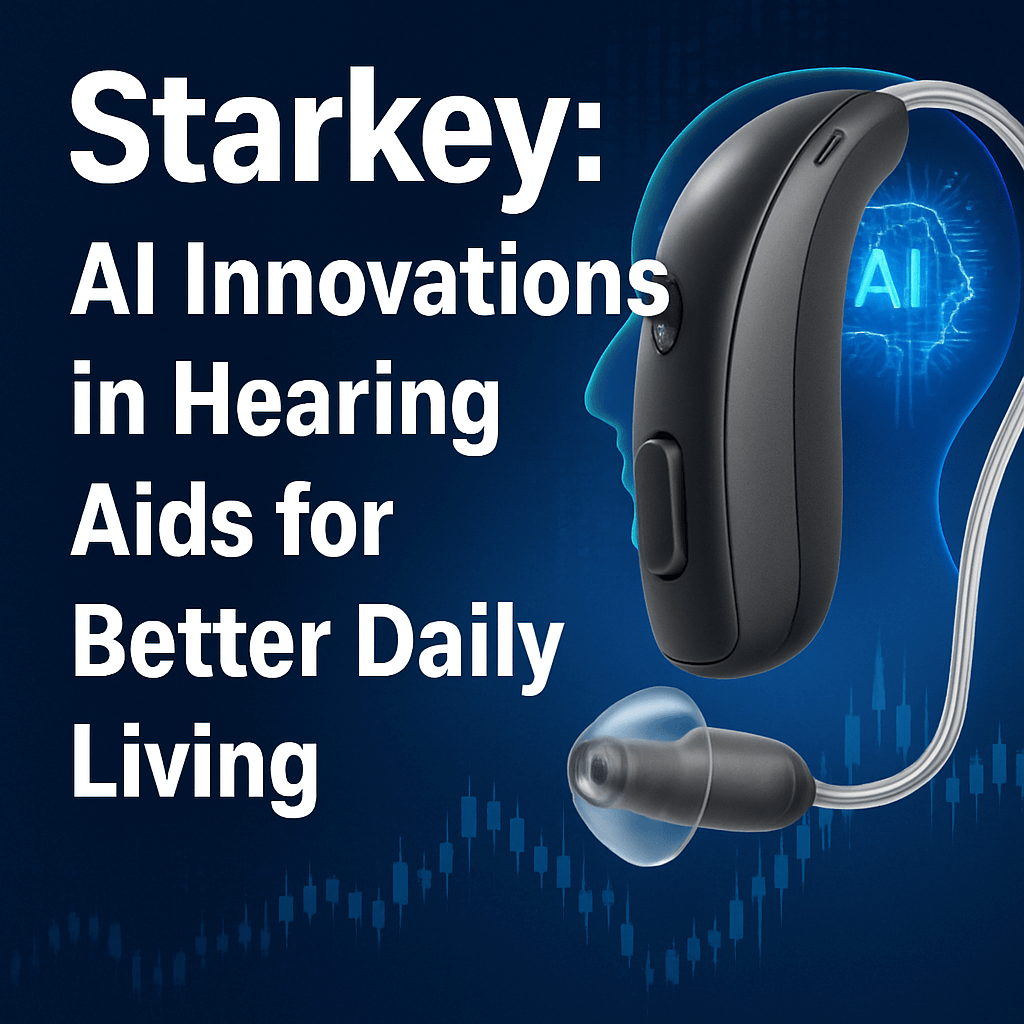Starkey: AI Innovations in Hearing Aids for Better Daily Living

Starkey, the only major hearing aid manufacturer in the United States, has embarked on a revolutionary endeavor by integrating artificial intelligence into its products. The latest model, which features advanced technologies, not only enhances auditory experiences but also introduces functionalities like fall detection, medication reminders, and a personal AI assistant. Starkey’s innovation stands in sharp contrast to competitors, such as Apple’s AirPods, which have recently claimed to function as makeshift hearing aids.
Background: A Journey to Starkey
The story of Jackson McConnell is emblematic of the profound impact that effective hearing aids can have on an individual’s quality of life. Having battled severe hearing loss since childhood, McConnell turned to Starkey after exhausting other brands in his quest for better auditory experiences. His heartfelt letter to Starkey’s founder, Bill Austin, led to a transformative moment when McConnell was personally fitted with customized hearing aids. This experience revealed to him the rich tapestry of sounds he had been missing.
Current Offerings and Technological Advancements
Starkey’s evolution from a repair shop in 1967 to a frontline innovator in hearing technology reflects its ongoing commitment to enhance personal auditory experiences through technology. The company reported impressive annual revenues exceeding $1 billion, further solidifying its stature in the $8 billion global hearing aid market.
AI-Driven Innovations
The cutting-edge Edge AI hearing aid, launched in October 2022, employs sophisticated algorithms that replicate the brain’s auditory processing capabilities. This electrical engineering feat not only amplifies sound but also enhances specificity in recognizing speech against background noise, leading to improved clarity in complex sound environments. Such advancements are critical for users who navigate daily environments filled with competing auditory stimuli, from conversations to environmental sounds.
Smart Features
- Fall Detection: The Edge AI hearing aids can trigger alerts to three designated contacts if a fall is detected, thereby adding a layer of safety for users.
- Medication Reminders: Built-in reminders assist users in managing their health regimens, ensuring they take necessary medications on time.
- Multilingual Translator: Transforming communication barriers, the AI assistant can translate 72 languages, an essential feature for diverse populations.
- Weather Updates: Users can receive real-time weather information, adding a practical element to everyday use.
Addressing Stigmas Surrounding Hearing Loss
Brandon Sawalich, Starkey’s President and CEO, underscores the importance of reshaping public perceptions of hearing aids. The stigma associated with aging and the use of hearing devices can deter individuals from seeking help. “People don’t want to get hearing aids because they’re getting older,” he noted, emphasizing Starkey’s commitment to making hearing aids fashionable and tech-savvy.
A Diverse Market Landscape
The cost of Starkey’s hearing aids ranges from $3,500 to $5,750, depending on features and required professional services. This pricing structure reflects the personalized nature of fitting these devices, which varies based on individual needs determined during consultations with hearing care professionals. External factors such as insurance coverage and state assistance programs play significant roles in accessibility for many consumers.
Comparison with Competing Products
While cheaper alternatives exist in the market, such as Apple’s AirPods Pro 2 priced at $250, Starkey differentiates itself through its comprehensive functionalities, aiming not merely to amplify sound but to deliver a thorough auditory processing experience. Devices mimicking clinical-grade performance lack the advanced features that Starkey offers, according to Sawalich.
Looking Ahead: The Future of Hearing Aids and Market Innovations
Sawalich describes the ear as “the new wrist,” indicating a burgeoning market for wearable technology. Starkey is investing in forward-thinking products that not only enhance current capabilities but also focus on preventative measures against hearing loss. The SoundGear Shield, designed for environments with high noise exposure, exemplifies this dual focus on protection and enhancement. With the potential to serve various industries, including first responders and government sectors, Starkey continues to evolve its product line.
A Call to Action
As awareness surrounding hearing health increases, Starkey aims to inspire individuals to seek testing and treatment for hearing loss. Sawalich articulates the urgent need to break down existing barriers and promote understanding of the comorbidities associated with untreated hearing impairment, thereby driving public health initiatives.
Conclusion
Starkey’s innovative approach to integrating AI within hearing aids is redefining how society interacts with the concept of hearing loss, combatting stigma while enhancing usability with smart features. As the demand for personalized technology grows, companies like Starkey are crucial in ensuring that auditory health remains a prioritized facet of overall well-being.
About the Author: Sydney Lake is an associate editor at Fortune, where she contributes news for the publication’s global news desk.